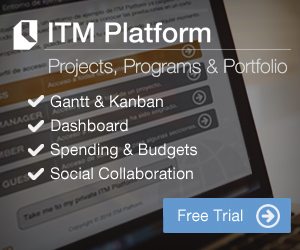 The risk manager is perhaps a position that is not as well recognized as others, however it is essential for the successful development of a company.
The risk manager is perhaps a position that is not as well recognized as others, however it is essential for the successful development of a company.
The job of a risk manager is to identify potential risks that may affect the organization on multiple fronts: reputation, safety and economic feasibility, even investment security. Although it is common for a risk manager to specialize in a particular area, so as to detect and address potential risks in their corresponding field. For example, risk departments are essential in the banking sector, and insurance companies have risk assessment as one of their core activities. In these areas it is common to find risk directors and risk analysts.
The importance of proper risk management for the development of any economic activity has led to a specialized discipline often known by its acronym: Enterprise Risk Management, or ERM. COSO defines the discipline as follows:
ERM is a process effected by an entity’s board of directors, management team and other personnel. It applies to the entire company in a strategic context, is designed to identify potential situations that may affect the entity, manage risks that are within the scope of its risk appetite and provide reasonable assurance to achieve the objectives of the entity.
If you are interested in this value proposition, you should know that the culmination of your professional development could come with the title of Chief Risk Officer (CRO). Although this managerial position is more common in the financial sector, large engineering firms also include them in their structure. A very interesting profile in the US, for example, is that of James Durree, Vice President of Risk, Ethics and Compliance at JACOBS. Durree’s career showcases the strong sectorial mobility of risk expertise: having started as a Risk Analyst at Abbot Laboratories, he then moved out of the healthcare industry and spent 21 years managing risk at Avery Dennison, a global packaging manufacturer. Durree’s last move to JACOBS placed him in front of the kinds of risks that are faced by primary process industries across a series of services.
In short, the risk profile of the specialist is so specific to the role that it can’t be confined to finance or insurance companies. Additionally, risk managers often require a strategic integration with project management. Depending on the size of the company and its organization, PMOs are likely to have access to a risk expert, although smaller or more horizontal companies may distribute that responsibility among regular project managers.
The position of risk manager has its own characteristics and expertise, combining technical knowledge with management experience and an important transversal competence: the ability to communicate and persuade. Therefore, to perform effectively as a risk manager you have to be comfortable taking up a central position, interacting with members of other teams within the company and with customers.
Once risks have been identified and assessed, risk managers work to implement procedures to overcome, transfer, or at least minimize them.
They must understand the objectives of the company, to always direct their efforts and make changes in the initial planning towards producing a product that provides the greatest customer satisfaction.
The result is a soaring new professional profile.
Tasks to be performed by the risk manager
-
Identify risks. Often, risk managers don’t have all the information they need, resorting to team workshops in which they share progress information and collect data from project units. In this case, the risk manager is the facilitator of conversations and a catalyzer of contingency plans.
-
Develop contingency plans. Once risks are identified, the risk manager is the person with the technical knowledge necessary to develop a contingency plan. It is possible that many details are beyond his competence and direct influence, so his work can sometimes be seen as internal consulting for the units that demand technical assessment.
-
Provide methodologies to identify and analyze the economic impact of the loss of any of the components of the organization, workforce changes, or any other damaging impacts.
-
Seek opportunities. The risk manager should select those enterprise opportunities that are more efficient for the company from a risk perspective.
-
Anticipate additional costs resulting from newly emerging risks through specific budget items. However, this should not prevail over realistic budget forecasts.
-
Work collaboratively with the board to maintain control over the objectives of each process, ensuring the end result meets customers’ needs.
Training and skills that a risk manager should have
The development of a risk manager will be different depending on the type of project or the type of risk that they will work with.
In addition to specific project management and risk training, a risk manager should be a subject matter expert of the project in which they will work. For example, if it comes to identifying risks in a project related to construction, it is appropriate for the risk manager to have experience in architecture or engineering. Only then will he be able to truly understand the market, challenges and opportunities that may arise during the execution of this specific project.
The professional profile of a risk manager also allows more varied training in other areas. In addition to project management, other measurable training studies include:
• Math
• Physics
• Statistics
• Business Management
• Financial and Actuarial Studies
• Economics
• Industrial engineering
For example, an engineer may have never worked specifically as a Risk Manager but have experience in construction or related engineering projects, and therefore in tracking tasks and managing projects. In this case, the lack of specific training in risks can be bridged by means of the transferable knowledge and skills developed in previous positions.
Besides the specific training in risk, a Risk Manager must have a series of non-specific, transferable competences, including but not limited to:
• Ability in problem-solving and decision-making
• Analytical skills and attention to detail
• Organizational skills
• Negotiation and persuasion skills
• Strong mathematical and quick calculation skills
• Business intelligence, to integrate risk calculations on the dynamics of development of the company.
If you wish to acquire the training and skills needed in the field of risk management, there are a number of institutions of reference in the US. One of the most renowned internationally is the Institute of Risk Management. Other prominent organizations are the International Risk Management Institute, or the Global Association of Risk Professionals. These organizations provide continuously updated courses and training qualifications.
Allies of a risk manager
In addition to the training and skills possessed by a risk manager, one of the keys to succeeding in the risk management field and transferring these assets to a company is the support of specific and advanced software.
In ITM Platform we work to provide a solution that allows you to maximize your productivity and complete projects effectively. You can start by testing the new online version of our risk assessment matrix tool, which you will also find in our integrated solution.
If you request a 14-day free trial on ITM Platform you can see just how easy it is to get custom reports, track tasks and perform the basic functions all risk managers need, including communication and coordination with all departments of the company.
Top 5 most read blogs on ITM Platform:
The Monte Carlo Method in Project Management
Three disastrous project management failures
The project in the face of adversity: what should a project manager do?
What is the Virtual Sock Management or Periodical Online Management?



